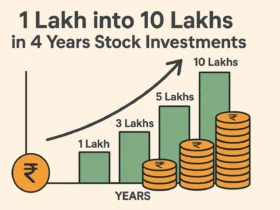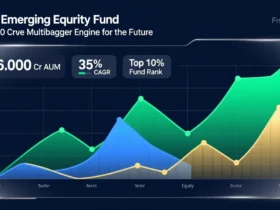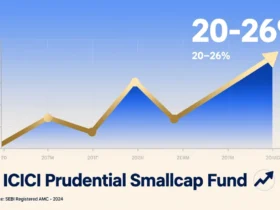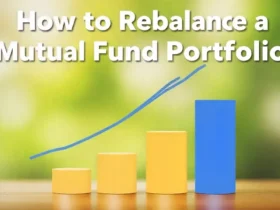Why Monthly Income Investments Matter
Picture Tom, a 60-year-old engineer who’s saved $750,000 for retirement. He’s ready to kick back and enjoy life, but one question haunts him: How do I turn my savings into a reliable monthly income? Tom’s not alone. Millions of people—retirees, young professionals, and everyone in between—want investments that pay out regularly to cover bills, fund dreams, or build wealth.
Monthly income investments are assets that generate cash flow on a predictable schedule, often every month. They’re a lifeline for financial stability, offering peace of mind and flexibility. As financial planner Jane Doe puts it, “Generating a reliable monthly income from investments is one of the most important aspects of retirement planning. It ensures you can maintain your lifestyle without depleting your savings too quickly.”
Table of Contents
So, what are the best options? Let’s explore.
Top Investment Plans for Monthly Income
Here’s a rundown of the seven best investment plans to generate monthly income. Each has unique benefits, risks, and strategies—perfect for tailoring to your goals.
1. Dividend-Paying Stocks
What Are They?
Dividend-paying stocks are shares in companies that share profits with investors through regular payouts. While most pay quarterly, some—like Realty Income (O)—distribute dividends monthly, making them ideal for steady income seekers.
How They Work
When a company earns profits, it may pay a portion to shareholders. For example, if you own 1,000 shares of a stock paying $0.10 per share monthly, you’d get $100 every month.
Why Choose Dividend Stocks?
- Income + Growth: You get cash flow plus potential stock price increases.
- Compounding Power: Reinvest dividends to buy more shares and boost returns over time.
- Flexibility: Sell shares if you need cash (high liquidity).
The Catch
- Volatility: Stock prices can swing wildly.
- Dividend Risk: Companies can cut or stop dividends during tough times.
- Taxes: Dividends are taxable, though qualified ones get favorable rates.
Pro Tip: Look for “Dividend Aristocrats”—companies that have raised dividends for 25+ years. Warren Buffett once said, “I never attempt to make money on the stock market. I buy on the assumption that they could close the market the next day and not reopen it for five years.” This long-term mindset is key for dividend investing.
Examples:
- Realty Income (O): “The Monthly Dividend Company” with over 50 years of increases.
- Main Street Capital (MAIN): A business development company with monthly payouts.

2. Bonds
What Are They?
Bonds are loans you give to governments or companies. In return, they pay you interest—sometimes monthly—and return your money when the bond matures.
Types of Bonds
- Government Bonds: Ultra-safe, like U.S. Treasuries.
- Municipal Bonds: Tax-exempt income from local governments.
- Corporate Bonds: Higher yields, higher risk.
Why Choose Bonds?
- Stability: Less volatile than stocks.
- Predictable Income: Fixed interest payments.
- Safety Net: Government bonds are nearly risk-free.
The Catch
- Low Returns: Yields are modest compared to stocks.
- Interest Rate Risk: Rising rates lower bond prices.
- Inflation: Fixed payments lose value over time.
Hack: Build a “bond ladder”—buy bonds with staggered maturities (e.g., 1, 2, 3 years)—for consistent income. Benjamin Graham, the father of value investing, noted, “The essence of investment management is the management of risks, not the management of returns.” Bonds are a cornerstone of risk management.
Examples:
- iShares Core U.S. Aggregate Bond ETF (AGG): Monthly payouts.
- Vanguard Total Bond Market Index Fund (VBMFX): Diversified bond income.
3. Real Estate Investment Trusts (REITs)
What Are They?
REITs are companies that own or finance income-producing real estate—like apartments or malls—and pay out most of their profits as dividends, often monthly.
Why Choose REITs?
- High Yields: Often 4-8% annually.
- Real Estate Exposure: No need to buy property yourself.
- Liquidity: Trade like stocks on exchanges.
The Catch
- Rate Sensitivity: Rising interest rates can hurt REIT values.
- Economic Risk: Downturns hit property income.
Examples:
- Annaly Capital Management (NLY): A mortgage REIT with monthly dividends.
- Stag Industrial (STAG): Industrial properties, steady payouts.
Fun Fact: REITs must pay out 90% of taxable income, making them income machines!
4. Annuities
What Are They?
Annuities are insurance contracts that promise a steady income—often monthly—for a set period or your lifetime.
Types
- Fixed: Guaranteed payouts.
- Variable: Payments tied to investment performance.
- Immediate: Start paying right away after a lump-sum investment.
Why Choose Annuities?
- Guaranteed Income: Perfect for retirees.
- Peace of Mind: No market worries.
The Catch
- Fees: Can be steep.
- Locked In: Hard to access your money early.
Best For: Risk-averse folks who want certainty.
5. Mutual Funds and ETFs with Monthly Distributions
What Are They?
These are pooled investments—stocks, bonds, or both—that pay out monthly dividends or interest.
Why Choose Them?
- Diversification: Spread risk across many assets.
- Professional Management: Experts handle the picks.
The Catch
- Fees: Management costs reduce returns.
- Variable Income: Payouts can fluctuate.
Examples:
- SPDR Bloomberg Barclays 1-3 Month T-Bill ETF (BIL): Safe, monthly income.
- Invesco High Yield Equity Dividend Achievers ETF (PEY): Dividend-focused.
6. Peer-to-Peer Lending
What Is It?
P2P lending platforms (like LendingClub) let you lend money to individuals or businesses, earning monthly interest.
Why Choose P2P?
- High Returns: Often 5-10%.
- Unique Asset: Diversifies beyond stocks and bonds.
The Catch
- Default Risk: Borrowers might not repay.
- Liquidity: Can be hard to cash out early.
Strategy: Spread your money across many small loans to reduce risk.
7. Rental Properties
What Are They?
Buy a property, rent it out, and collect monthly rent checks.
Why Choose Rentals?
- Big Returns: Potential for 5-10%+ yields.
- Tangible Asset: You own something real.
The Catch
- Work: Managing tenants and maintenance.
- Risk: Vacancies or bad renters.
Tip: Location is everything—pick areas with strong rental demand.

Comparing the Options: A Handy Table
Here’s a quick comparison to help you decide:
| Investment | Average Yield | Risk Level | Liquidity | Pros | Cons |
|---|---|---|---|---|---|
| Dividend Stocks | 2-5% | High | High | Growth potential, income | Volatility, dividend cuts |
| Bonds | 1-4% | Low-Med | Med-High | Stable, safe | Low returns, rate risk |
| REITs | 4-8% | Med-High | High | High yields, real estate | Rate sensitivity |
| Annuities | Varies | Low | Low | Guaranteed income | Fees, illiquidity |
| Mutual Funds/ETFs | 2-6% | Medium | High | Diversified, managed | Fees, variable payouts |
| P2P Lending | 5-10% | High | Low-Med | High returns | Default risk |
| Rental Properties | 5-10%+ | High | Low | High income, asset | Management, vacancies |
Pros and Cons of Each Plan
Dividend Stocks
- Pros: Income plus growth, flexible.
- Cons: Risky, taxable.
Bonds
- Pros: Steady, low risk.
- Cons: Modest returns, inflation risk.
REITs
- Pros: High payouts, easy to buy.
- Cons: Economic and rate risks.
Annuities
- Pros: Security, predictability.
- Cons: Costly, rigid.
Mutual Funds/ETFs
- Pros: Broad exposure, hands-off.
- Cons: Fees, inconsistency.
P2P Lending
- Pros: High yields, innovative.
- Cons: Defaults, access issues.
Rental Properties
- Pros: Lucrative, tangible.
- Cons: Time-intensive, risky.
How to Choose the Right Plan for You
Picking the best investment isn’t one-size-fits-all. Here’s how to decide:
- Risk Tolerance: Can you handle ups and downs? Stocks and REITs suit the bold; bonds and annuities fit the cautious.
- Time Horizon: Long-term? Stocks or real estate. Short-term? Bonds or P2P.
- Income Needs: Want $1,000/month? At 4% yield, you’d need $300,000 invested.
- Diversification: Mix it up—stocks, bonds, and REITs together lower risk.
- Taxes: Municipal bonds save on taxes; dividends don’t.
Checklist:
- Define your monthly income goal.
- Assess how much risk you can take.
- Calculate your investment amount.
- Research each option’s yield and risks.
- Talk to a financial advisor.
Real-Life Examples
Case Study 1: Retiree John
John, 65, has $500,000 and wants $2,000/month.
- Bonds: $300,000 at 3% = $750/month.
- Dividend Stocks: $200,000 at 4% = $667/month.
- Total: $1,417/month. He’d need higher yields or more capital for $2,000.
Case Study 2: Young Sarah
Sarah, 30, invests $50,000 for passive income.
- REITs: $20,000 at 5% = $83/month.
- Dividend Stocks: $15,000 at 3% = $37.50/month.
- P2P Lending: $15,000 at 7% = $87.50/month.
- Total: $208/month—reinvested to grow.
Risks and How to Manage Them
Investing isn’t risk-free. Here’s what to watch for:
- Market Risk: Diversify across assets.
- Interest Rate Risk: Use short-term bonds or REITs carefully.
- Credit Risk: Stick to high-quality issuers.
- Liquidity Risk: Keep some cash handy.
- Inflation Risk: Add stocks or real estate for growth.
Tax Implications
Taxes affect your take-home income:
- Dividends: Qualified ones get lower rates.
- Bonds: Interest is ordinary income (except munis).
- REITs: Mostly ordinary income.
- Annuities: Tax-deferred until withdrawal.
- Rentals: Deduct expenses to lower taxes.
See a tax pro to optimize your plan.
FAQs
Q: What’s the safest investment for monthly income?
A: Government bonds or fixed annuities—low risk, steady payouts.
Q: How much do I need for $1,000/month?
A: At 4% yield, $300,000. Adjust based on your investments’ returns.
Q: Can I live off dividends?
A: Yes, with a big enough portfolio and diversification.
Q: What guarantees monthly income?
A: Annuities offer guarantees; bonds are close but not foolproof.
Q: How do I start?
A: Set goals, research, start small, and get advice.
Conclusion: Start Building Your Income Today
Whether you’re like Tom, planning retirement, or Sarah, chasing passive income, the best investment plans for monthly income can set you free. Dividend stocks, bonds, REITs, and more—each offers a path to financial security. Diversify, assess your risks, and take action.
John Bogle, Vanguard’s founder, said, “Don’t look for the needle in the haystack. Just buy the haystack!” A balanced portfolio might just be your haystack. Start today—your future self will thank you.




























Leave a Reply